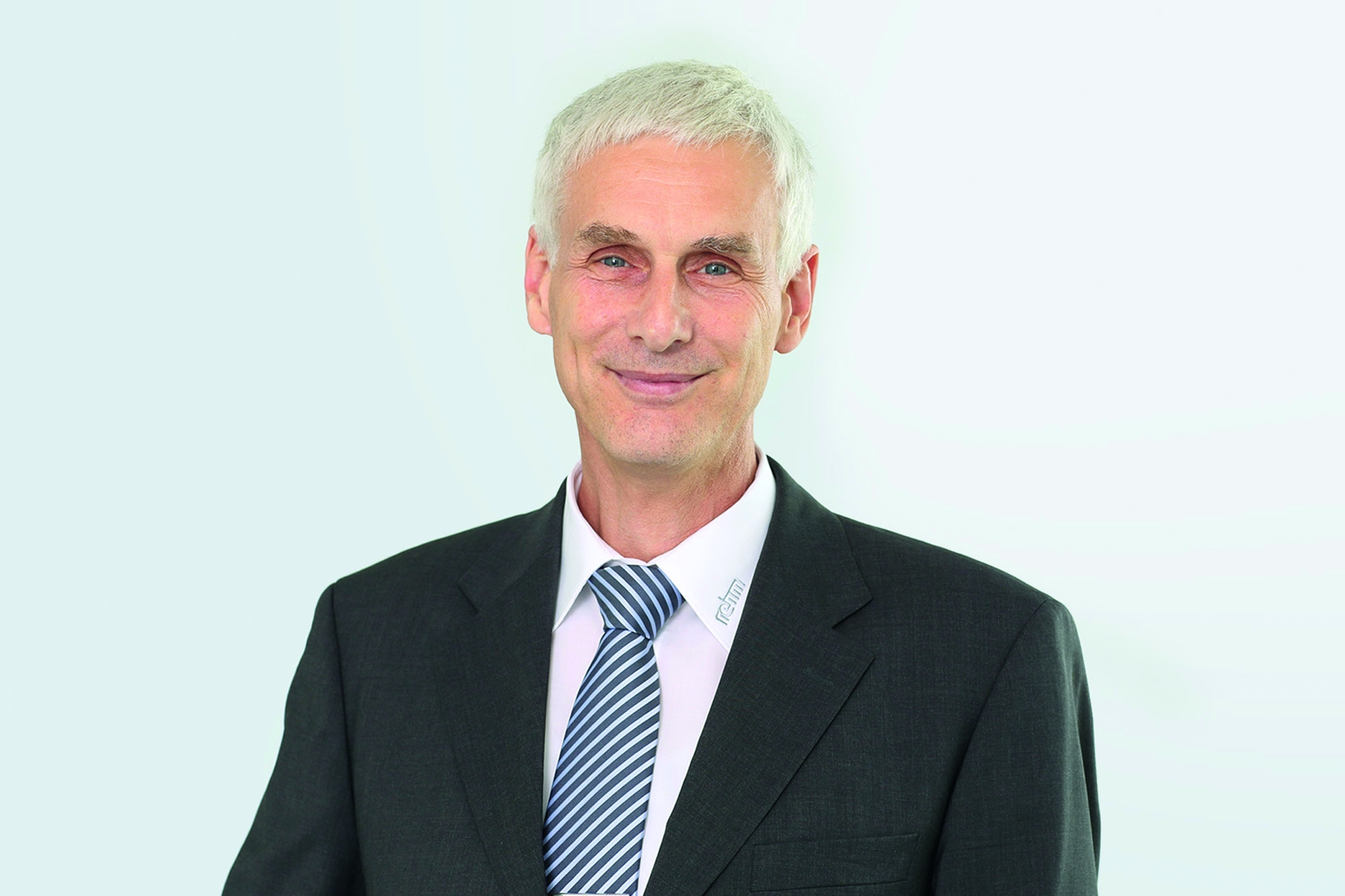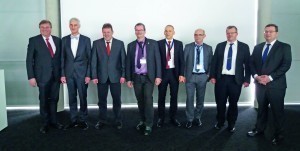Dr. Hans Bell's commitment to the interests of the industry was crowned with a specialist seminar before he retired from active professional life. Bell had been in charge of research and development at Rehm for over 20 years, working closely with many experts in the industry. Not every innovation is adopted across the board and quickly in all areas. It is important to recognize the right approaches at an early stage in order to be prepared. At the seminar, proven technologies and future trends were examined by experts from industry and research in order to jointly find answers as to which factors are important and to demonstrate the potential of the latest technologies in the SMT world.
Digital transformation - a challenge for the EMS industry
After the official welcome by Dr. Paul Wild, Rehm Thermal Systems GmbH, Blaubeuren, Johann Weber, Zollner Elektronik AG, Zandt, opened the presentations with a talk on digitalization. He began by explaining why the digital transformation affects everyone and is therefore also a challenge for the EMS industry: "The digital transformation is not an option for competitive companies, but a duty. Digital transformation will massively change processes as well as our private and economic lives." Based on the global megatrends, Johann Weber explained what the ZVEI media library Watts On offers in terms of information on digital transformation and what the ZVEI offers in terms of further information (including guidelines). He also discussed the electronics design chain and digital planning processes at process level (DFX) and product level (PCN/OM) through to digital factory planning. He also explained the importance of traceability and the digital twin.
Using examples, he showed how the digital transformation can be implemented and realized in practice at EMS companies. Johann Weber noted that management makes a decisive contribution to this - as a role model and by developing resources. After all, further training and knowledge transfer in networks are particularly important for digital transformation.
To conclude, Johann Weber thanked Dr. Hans Bell for the many years of trusting cooperation and presented him with the partnership certificate from Zollner Elektronik AG and the trophy.
Augmented reality in electronics production
Dr. Frank-Peter Schiefelbein, Siemens AG, Berlin, described what can now be achieved with modern data glasses and augmented reality in production and the associated benefits. Up to now, almost everything has been operated using a keyboard, switch, mouse or touchscreen. The worker's attention is not focused on the actual work but on the human-machine interface, which can lead to errors. With appropriate data goggles, information can be displayed directly in the working field of vision and workers can be enabled to use their hands only for the actual work. This increases productivity and prevents errors. It also increases flexibility and makes work more attractive due to the greater variety of processes that can be handled.
Schiefelbein explained the current developments in data glasses and augmented reality, including the Glass@Service project and the resulting new data glasses. Using examples from the logistics and electronics manufacturing sector (picking processes in the warehouse, setting up SMD pick-and-place machines, device assembly with visual inspection), he illustrated the opportunities this opens up. He also addressed unanswered questions regarding occupational safety, ergonomics and data protection and concluded by comparing the wish and reality of augmented reality. For example, robust recognition of objects and gestures is currently only possible to a very limited extent and speech is only suitable for article numbers to a limited extent. Automatic, context-dependent provision of information is also only possible to a limited extent using available open source software and AI.
System in package - high-quality assembly technology at all integration levels
Prof. Dr. Klaus-Dieter Lang, Fraunhofer IZM, Berlin, looked at the development from microelectronics via microsystems to smart systems and increasingly intelligent products thanks to AI. The demands for multifunctionality and system reliability with adapted form factors and low costs act as drivers for system integration technologies. Wafer level technologies are used for the realization of neural networks etc. For GPUs, chip stack structures with TSVs. Both are examples of system-in-package (SiP) solutions.
However, SiP integration is much more than just another packaging solution, as SiP is tailored to the application and requires the use of new materials combined with new processes.
Lang presented examples of various SiP solutions, including an SiP toolbox. As part of the PeKOS project, the technologies (machines and processes) for 600 mm panel level packaging are being developed. Panel level technology is a particularly suitable platform for heterogeneous integration, which was illustrated using the example of an SiP solution for 5G and a photonic transceiver. One of the main challenges for the future is standardization. Here, too, there are already solutions for which examples from current funding projects were presented.
Challenges of the last 20 years
Christoph Hippin, Endress+Hauser SE+Co KG, Maulburg, explained the technical challenges of the last 20 years in electronics production based on joint projects. The decreasing proportion of THT and the desire to be able to solder THT and SMT components in one process and thus require fewer process steps were the motivation for back-side reflow (BSR) and the development of a BSR soldering system. The first generation of systems was developed for the leaded process: The V6 reflow soldering system was equipped with a cooling unit for this purpose. In the second generation, the VX reflow system was improved with cross-flow coolers. The third generation was designed for the lead-free process and is based on the VXP with cross-flow coolers and zone control.
Hippin described the system development that took place at the Fraunhofer ISIT. The result was a temperature difference of 35 K between the top and bottom sides. He also discussed the softlock technology developed in conjunction with BSR, which allows the THT components to be fixed without extra process steps using only a printed circuit board. In addition to the higher PCB manufacturing costs, the accuracy of the drill holes and the tolerances of the THT component pins are problematic. It is an alternative to the BSR process with UV bonding (solder paste printing, turning, UV adhesive dispensing, THT assembly, UV curing, turning, SMD assembly, reflow soldering). BSR can also be used for other applications such as step soldering with high and low melting point solders.
Christoph Hippin described the problems and requirements for processing QFN/DFN as well as SOD and SOT designs as further challenges. He focused in particular on component tolerances, layout influences, offset, twisting, solder gap and tilting. Much of this can be found in the jointly compiled Rehm Reflow Technology Book Volume 4 on miniaturization.
Wide range of applications for bismuth solders
Based on the unusual physical properties of bismuth and the maximum operating temperature of BiSn solder joints, Prof. Dr. Mathias Nowottnick, University of Rostock, listed the many possible applications of bismuth solders. The low-melting bismuth solders (Bi-Sn eutectic melting point 139 °C) enable environmentally friendly component assembly with low soldering temperatures. The resulting soldered joints show only minor changes even after 2000 h at 110 °C. This is because BiSn solder joints can withstand relatively high thermal loads (homologous) and the solder joints are also chemically stable (IMP) up to approx. 110 °C.
For applications at higher temperatures of 200 °C to 250 °, liquid or temporary liquid solder joints (TLSD) with Bi solders are an option. Nowottnick used demonstrators with power components, among other things, to explain the challenges involved. For example, the copper surfaces must be protected by diffusion barriers against deposition during (permanent) contact with liquid solder.
Another alternative for high-temperature applications is liquid-phase sintering (TLPS) with a Cu/BiSnAg mixture as a sintering paste. He explained how liquid-phase sintering, i.e. isothermal soldering, works and showed micrographs and SEM/EDX images of the compounds produced in this way. Isothermal solidification can be used to increase the melting temperature. Isothermal soldering with BiSn solders does not require a diffusion barrier.
Consequences of miniaturization
In addition to the external experts, experts from Rehm Thermal Systems GmbH, Blaubeuren, also contributed to the seminar. Helmut Öttl spoke about the right soldering process and gave an overview of the options available and the selection criteria. Dr. Paul Wild spoke about current requirements for thermal processes - goals and strategies. Dr. Hans Bell illustrated the consequences of ongoing miniaturization using numerous practical examples. The presentations were followed by a get-together and company tours.




